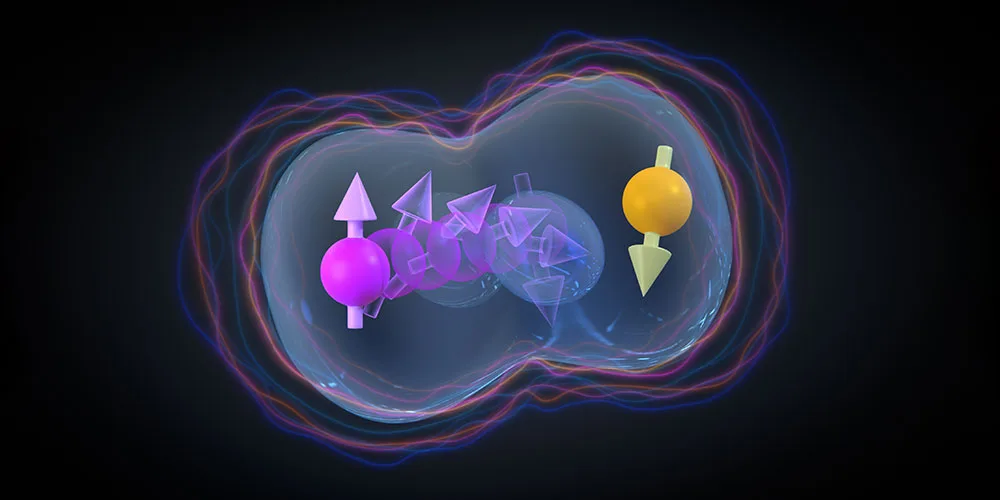Researchers from the University of Basel and the NCCR SPIN have successfully controlled the interaction between two hole spin qubits in a conventional silicon transistor. This breakthrough could potentially allow for the integration of millions of qubits on a single chip using existing manufacturing processes. The team, led by Dr. Andreas Kuhlmann, demonstrated a controlled spin-flip, a crucial operation for quantum computing. This development suggests that hole spin qubits, which can be electrically controlled and are highly scalable, could be a promising approach in the development of large-scale quantum computers.
Quantum Computing: A Leap Forward with Hole-Spin Qubits
The quest for a practical quantum computer has been a focal point of scientific research for years. The foundation of such a computer lies in quantum bits, or qubits, which are responsible for the processing, transfer, and storage of data. The challenge lies in creating a system where millions of qubits can interact reliably and rapidly on a single chip. A recent breakthrough by researchers from the University of Basel and the NCCR SPIN may have brought us a step closer to this goal.
The Role of Electrons and Holes in Quantum Computing
The researchers have focused on a type of qubit that utilizes the spin of an electron or a hole. A hole, in this context, is a missing electron in a semiconductor. Both holes and electrons possess spin, which can adopt one of two states: up or down, analogous to 0 and 1 in classical bits. The advantage of a hole spin over an electron spin is that it can be entirely electrically controlled without needing additional components like micromagnets on the chip.
In 2022, the Basel physicists demonstrated that the hole spins in an existing electronic device could be trapped and used as qubits. These devices, known as “FinFETs” (fin field-effect transistors), are built into modern smartphones and are produced in widespread industrial processes.
Achieving Controllable Interaction Between Two Qubits
The team, led by Dr. Andreas Kuhlmann, has now achieved a controllable interaction between two qubits within this setup for the first time. This is a significant step forward as a quantum computer needs “quantum gates” to perform calculations. These gates represent operations that manipulate the qubits and couple them to each other.
The researchers were able to couple two qubits and bring about a controlled flip of one of their spins, depending on the state of the other’s spin – known as a controlled spin-flip. “Hole spins allow us to create two-qubit gates that are both fast and high-fidelity. This principle now also makes it possible to couple a larger number of qubit pairs,” says Kuhlmann.
The Anisotropic Exchange Interaction of Two-Hole Spin Qubits
The coupling of two spin qubits is based on their exchange interaction, which occurs between two indistinguishable particles that interact with each other electrostatically. Interestingly, the exchange energy of holes is not only electrically controllable, but strongly anisotropic. This is a consequence of spin-orbit coupling, which means that the spin state of a hole is influenced by its motion through space.
To describe this observation in a model, experimental and theoretical physicists at the University of Basel and the NCCR SPIN combined forces. “The anisotropy makes two-qubit gates possible without the usual trade-off between speed and fidelity,” Dr. Kuhlmann says in summary.
The Future of Quantum Computing
The study underscores that this approach has a strong chance in the race to develop a large-scale quantum computer. “Qubits based on hole spins not only leverage the tried-and-tested fabrication of silicon chips, they are also highly scalable and have proven to be fast and robust in experiments,” the researchers concluded. This breakthrough opens up the possibility of integrating millions of these qubits on a single chip using mature manufacturing processes, bringing us one step closer to the realization of practical quantum computers.
External Link: Click Here For More

